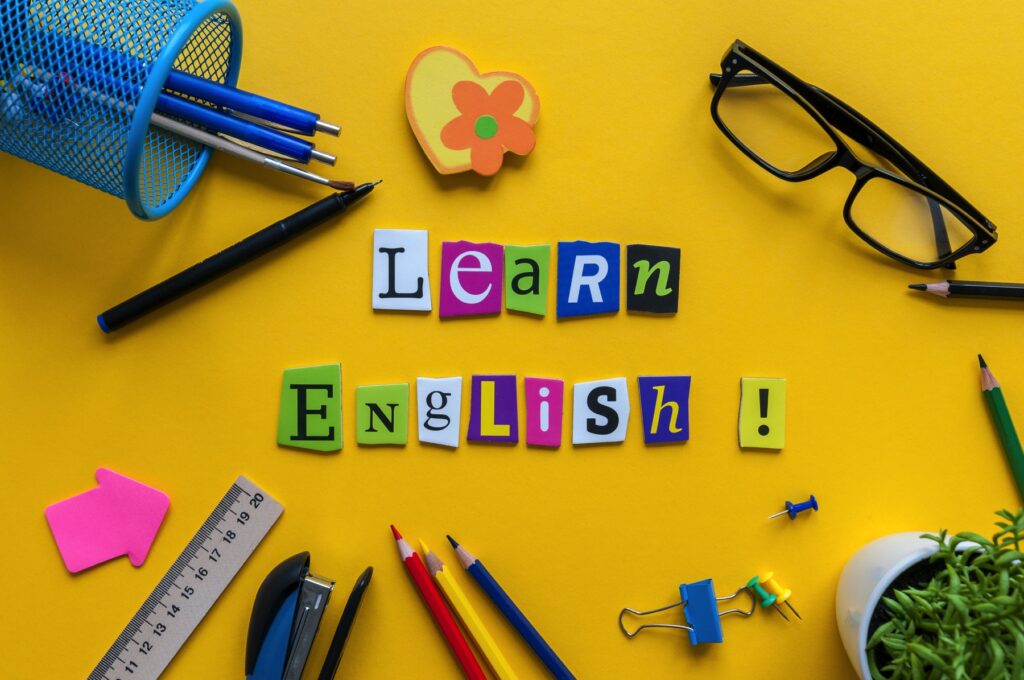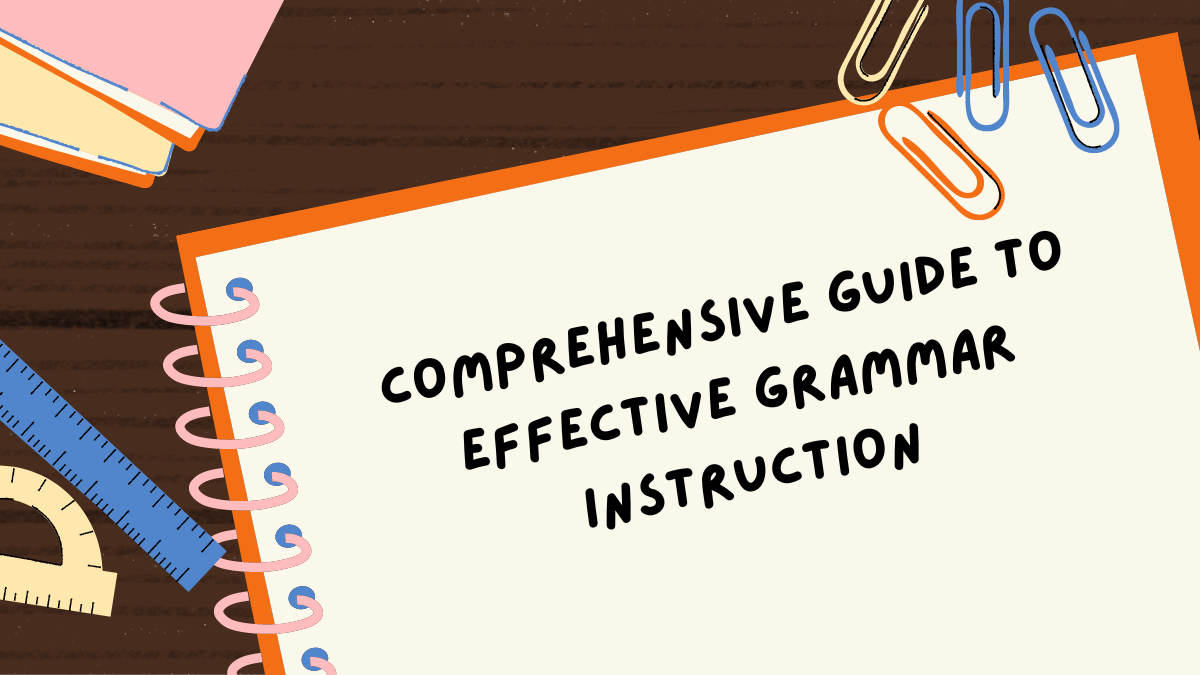Welcome to the exhilarating roller coaster ride that is grammar instruction! And no, we are not jesting. If you think grammar is all about dusty old textbooks, monotonous drills, and memorizing an endless list of rules, then fasten your seatbelt because you’re in for a surprise. Teaching grammar doesn’t have to be akin to dental surgery — it can be fun, engaging, and dare we say, even a bit thrilling.
In the realm of language education, grammar is the grumpy old man in the corner at a party — everyone knows he’s essential, but no one really wants to engage with him. Yet, the secret lies in approaching him the right way. Like unravelling the mysteries of a complex novel, teaching grammar involves peeling back layers of structure, meaning, and use, one layer at a time.
So, grab your explorer’s hat, and let’s chart a course through the labyrinth of adverbs, the thickets of tenses, and the dramatic cliffs of clauses. Trust us, the view from the top is worth the climb. The journey may be challenging, but with the right techniques and approaches, it won’t be long before you and grammar are toasting to a job well done at that language party!
Understanding the Basics of Grammar

Before we jump into the depths of grammar instruction, it’s essential to understand the basics of grammar. The term ‘grammar’ encompasses the system and structure of a language, including its rules and conventions. It involves parts of speech and how they interact, sentence structures, verb tenses, punctuation, and more. This foundational knowledge will pave the way for successful grammar instruction, allowing educators to break down complex language patterns and structures into understandable parts for learners.
However, understanding the basics of grammar extends beyond knowing its definitions and rules. It is a tool for effective communication, so it’s equally important to understand the context in which it’s used. This involves recognizing that grammar isn’t a one-size-fits-all solution, but rather, it’s fluid and adaptable based on factors like the speaker’s purpose, the audience, and the communication medium. For instance, the grammar used in an academic essay differs from that in an informal conversation, and knowledgeable instructors must be aware of these differences to guide their students effectively.
Lastly, a deep understanding of grammar must be accompanied by an awareness of common misconceptions and errors. These can stem from linguistic differences, cognitive complexities, or simply from the tricky nature of the English language. Being aware of these pitfalls not only allows educators to anticipate and address them in their instruction but also instills a sense of empathy for the learning journey their students undertake. It’s a reminder that while grammar may seem daunting, it’s ultimately a stepping stone towards mastery and confidence in language use.
Methods of Teaching Grammar

There are multiple methods to teach grammar, and each has its benefits and drawbacks. One common method is the deductive approach where the rule is presented and the language is produced based on this rule. This method is often speedy and can clarify grammar rules, but it can also be dry if not done with engaging activities. On the other hand, there’s an inductive approach where the learners are given examples and they have to find the rule or regularity themselves. The inductive approach can be more engaging and transformative as it encourages students to analyze and understand the language, but it can also be confusing for some learners who prefer clear rules.
Practicing and testing grammar are also crucial in the teaching process. Practicing involves engaging students in activities that allow them to use the grammar structures they’re learning about. This can range from fill-in-the-blank exercises to more interactive activities such as role plays or games. It’s important to incorporate a variety of activities to cater to different learning styles. Testing, on the other hand, isn’t just about assessing students’ knowledge, but it’s also a means to reinforce learning. Regular quizzes on grammar rules can help students retain information and track their own progress.
Error correction is another essential aspect of grammar teaching. It’s important to address errors in such a way that it promotes learning and doesn’t discourage students. Some teachers prefer immediate correction, while others may choose to take note of errors and address them later to not interrupt the flow of communication. It’s also crucial to balance error correction with positive feedback to build students’ confidence in using the language. Integrating grammar instruction with different teaching methodologies like communicative language teaching and task-based learning can also make grammar learning more meaningful and relevant. In communicative language teaching, for example, the focus is on meaningful communication rather than just correct forms. This makes grammar more purposeful as students learn to use it as a tool to express their thoughts and ideas.
Inductive and Deductive Approaches

The inductive and deductive approaches to teaching grammar each have their unique strengths and weaknesses, and the ideal choice often depends on the individual learner’s needs and preferences. The deductive approach, where the rule is stated upfront and then exemplified, is often appreciated by learners who like clear-cut rules and structured learning. Directly explaining the rules can save time and provide clarity, making it quicker for learners to start practicing the new grammatical structure. However, this approach can be less engaging and may discourage student discovery and creativity.
On the other hand, the inductive approach, where examples are provided for students to discern the rule themselves, can be more engaging and encourages learners to think critically about the language. By figuring out the rules through observation and analysis, students may better understand and remember the rules. This approach mimics how we naturally acquire language, making it more intuitive for some learners. However, it can be more time-consuming and may confuse students who struggle with abstract thinking or prefer to have clear rules.
The key to effective grammar teaching lies in the strategic use of both approaches. Educators can intersperse deductive teaching with inductive learning exercises to foster both understanding and engagement among learners. This combination offers a balance of rule clarity from the deductive method and the analytical, discovery-based learning fostered by the inductive approach. The choice between these methods should be flexible and influenced by factors such as the complexity of the grammar point, the learners’ language proficiency, their learning style, and the context of language use. Ultimately, effective grammar teaching should enable learners to use grammar as a tool to communicate effectively and confidently.
Practicing and Testing Grammar Skills

Practicing grammar skills is a vital part of the learning process that allows learners to apply the rules and structures they’ve learned in a practical context. This practice can take many forms, ranging from simple written exercises to interactive games and role-playing activities. For instance, filling in the blanks or rewriting sentences can help students understand and apply grammar rules. On the other hand, role-playing activities or debates can provide students with a more dynamic and engaging environment to practice their grammar skills in a more realistic and communicative context. It’s important for teachers to incorporate a variety of these activities to cater to different learning styles and to maintain students’ interest.
Testing grammar skills, while sometimes viewed negatively by students, is a crucial component of the learning process. Regular testing can help reinforce the rules and structures learned, aid in the retention of information, and provide both teachers and students with a clear indication of the progress being made. Quizzes don’t have to be formal or daunting; they can take the form of fun games or quick in-class activities that allow students to review and apply what they’ve learned. Furthermore, feedback from these tests can help teachers adjust their teaching strategies and can guide students in their future study planning.
Error correction is another key aspect of teaching grammar. It’s a delicate balance; teachers must be careful not to discourage students with excessive correction, but at the same time, they must ensure that students are learning to use grammar correctly. Some teachers might opt for immediate correction, while others might choose to note the errors and address them later, depending on the nature of the activity and the objective of the lesson. Regardless of the correction method chosen, constructive feedback is crucial to fostering a positive learning environment. By highlighting both the students’ strengths and areas for improvement, teachers can encourage students to continue learning and growing.
Error Correction

When discussing error correction, one must acknowledge its essential role in grammar teaching. Correcting errors can be a delicate task, as it requires promoting learning without discouraging the student. Different strategies can be employed to achieve this delicate balance. Some educators prefer immediate correction, which offers learners the chance to correct their mistakes on the spot and learn from their errors. However, this method may disrupt the flow of communication, and for some students, the interruption can be somewhat discouraging.
An alternative approach is the delayed correction, where educators take note of errors to address later. This method allows for uninterrupted communication during the learning process, which can foster a more fluid, natural interaction. While it can be less confrontational, the delayed method runs the risk of students forgetting the context of their mistake by the time the correction is made.
Deciding on the appropriate method largely depends on the student’s personality, the nature of the task at hand, and learning objectives. Regardless of the correction strategy chosen, it is also crucial to balance corrections with positive feedback. By acknowledging the learner’s progress and victories, educators can cultivate a positive learning environment and boost the student’s confidence in utilizing the language, thereby encouraging continued progress.
Integration with other Methodologies

Grammar teaching methods cannot exist in isolation; they need to be integrated with other language teaching methodologies for optimal results. This holistic approach can create a more immersive and comprehensive learning experience. For instance, the communicative approach emphasizes interaction as a means to learn and apply grammar in context. Incorporating grammar teaching within a communicative framework enables learners to use grammar as a tool for effective communication, rather than viewing it as an abstract set of rules to memorize.
Moreover, the task-based approach, where language learning revolves around the completion of meaningful tasks, can also be positively merged with grammar teaching. In this method, grammar rules can be taught and practiced in the context of real-world tasks, which increases the relevance and applicability of lessons. This integration can provide learners with practical language skills that go beyond classroom instruction and prepare them for real-life language use.
The integration of grammar teaching with other methodologies also extends to the use of technology in language learning. Digital platforms and online resources offer a multitude of opportunities for interactive grammar instruction and practice. From grammar drills and quizzes to engaging games and collaborative projects, technology can enhance the learning experience, making it more engaging and learner-centered. By leveraging these resources, educators can foster a more dynamic and adaptable learning environment that caters to the diverse needs and preferences of learners.
Hands-on Activities and Games

Hands-on activities play an instrumental role in grammar teaching, transforming the learning process into an engaging and interactive experience. Activities such as role-plays, group projects, or sentence construction games allow students to put grammar rules into practice, thereby enhancing their understanding and retention of these rules. These activities also promote collaborative learning, providing students with opportunities to learn from their peers and to develop their communication skills. Furthermore, they cater to different learning styles, making learning more inclusive and personalized.
In addition to hands-on activities, games also offer an effective and enjoyable way to teach and practice grammar. Games add an element of fun to the learning process, increasing student motivation and participation. They can range from traditional board games and card games, which can be adapted to focus on specific grammar points, to digital games, which can offer a more immersive and interactive learning experience. By incorporating games into grammar teaching, educators can create a dynamic and stimulating learning environment that enhances student engagement and learning outcomes.
However, while hands-on activities and games are instrumental in teaching grammar, they need to be carefully selected and designed to match the learning objectives and to cater to the students’ abilities and interests. They should be used as a complement to other teaching methods, providing students with varied and balanced learning experiences. Effective use of these activities and games requires careful planning, creativity, and flexibility on the part of the educator. But when implemented effectively, they can transform grammar teaching into a more engaging and impactful process.
Sample Lesson Plans

Lesson Plan 1: “Past Simple Tense”
The main goal of this lesson is to introduce the Past Simple tense to ESL students. Begin the lesson with an engaging warm-up activity that prompts students to think about past events. This could involve students sharing a memorable event from their past. Follow this with a brief lecture explaining the fundamental rules of the Past Simple tense, including its structure and use. Reinforce this instruction with interactive activities, such as sentence construction exercises or a game of bingo using past simple sentences. Conclude the lesson with a review and a self-assessment task for students to evaluate their understanding of the topic.
Lesson Plan 2: “Adjectives and Adverbs”
This lesson aims to teach students the difference between adjectives and adverbs and their proper usage. Kick-off the lesson with a brainstorming activity where students list adjectives and adverbs they already know. Then transition into a lecture explaining the differences between the two and their respective roles in a sentence. Include examples to illustrate proper usage. Follow this with a group activity where students work together to identify adjectives and adverbs in a given text, modifying it where necessary. Wrap up the lesson with a fun game, such as ‘Adjective or Adverb’, where students guess whether a word is an adjective or an adverb based on its usage in a sentence.
Lesson Plan 3: “Present Perfect Tense”
The objective of this lesson is to introduce the Present Perfect tense. Begin with an icebreaker activity, such as sharing something they have done today, to get students thinking about the concept of the present perfect. Then, lead a discussion on the rules of the Present Perfect tense, using visual aids to explain the structure and usage. Follow this with interactive exercises where students convert Past Simple sentences into Present Perfect. Conclude the lesson with a game of ‘charades’ where students act out different verbs in the Present Perfect tense. These activities will enhance student understanding and application of the Present Perfect tense.
Assessing Progress and Providing Feedback

Assessing student progress is an integral aspect of teaching grammar. Assessment tools such as quizzes, tests, and writing assignments allow educators to gauge students’ understanding, identify areas of weakness, and adjust instructional strategies accordingly. However, to effectively assess student progress, these tools need to be diverse and adaptable, reflecting the varied nature of language learning. For instance, in addition to traditional written tests, teachers may incorporate oral assessments or performance-based tasks that test students’ ability to use grammar in different contexts. Moreover, assessments should be ongoing and formative, providing students with regular feedback that guides their learning and development.
Providing constructive feedback is equally crucial in grammar instruction. Feedback offers students insight into their performance, highlighting their strengths and pinpointing areas that need improvement. However, for feedback to be effective, it needs to be timely, specific, and actionable. Timely feedback allows students to immediately act on it while the learning material is still fresh in their minds. Specific feedback pinpoints exactly what the student did correctly or incorrectly, and actionable feedback provides suggestions on how the student can improve. In delivering feedback, it’s also important for educators to maintain a positive and supportive tone to encourage students and boost their confidence.
Using a combination of these assessment and feedback strategies can effectively facilitate students’ grammar learning. It enables teachers to track student progress, tailor instruction to individual needs, and provide relevant and constructive feedback. Over time, these practices will not only enhance students’ grammatical competence but also their confidence and autonomy in using the language. By fostering an environment that values continuous learning and improvement, teachers can help students reach their full potential in their language learning journey.

